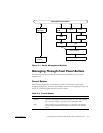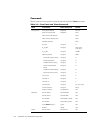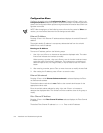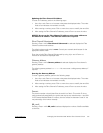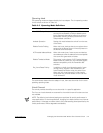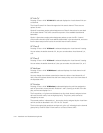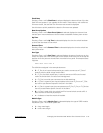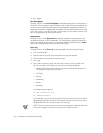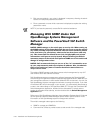
support.dell.com Managing the PowerVault 56F 16-Port Fibre Channel Switch 3-11
(
The operating modes are determined by the host adapter. The six operating modes
for the switch are shown in Table 3-5:
The administrator determines the adapter in use, then sets the switch for the corre-
sponding operating mode.
'
The switch provides the ability to tune the switch in a specific application.
The first two virtual channels are reserved for the switch’s internal functions and are
not available.
NOTE: The default virtual channel settings are optimized for switch performance in
most applications. For some applications, changing from default values may improve
performance. If changes are made without fully understanding these parameters, the
switch performance will be degraded considerably.
$&'%
Non-SCSI Tachyon Mode When set, multiple sequences from different
sources are interleaved to Tachyon-based control-
lers at Sequence boundaries rather than at frame
boundaries, resulting in better performance from
Tachyon-based controllers.
Isolated Operation Setting this mode isolates the switch from the rest
of the fabric.
Disable Device Probing When this is set, devices that do not register them-
selves with the Name Server will not be present in
the Name Server data base.
VC-Encoded Address Mode When this mode is set, frame source and destina-
tion addresses utilize an address format compatible
with some first-generation switches.
Disable Translative Mode This setting is only relevant if VC Encoded Address
Mode is also set. When set, this maintains explicit
address compatibility with the PowerVault 50F
switches.
Per_frame Route Priority In addition to the 8 virtual channels used in frame
routing priority, support is also available for per-
frame based prioritization when this value is set.
When set, the virtual channel ID will be used in
conjunction with a frame header to form the final
virtual channel ID.



